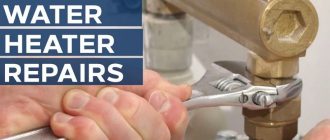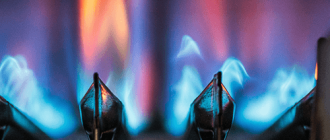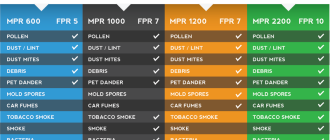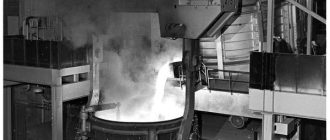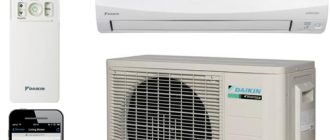Running Your HVAC System Properly Amid Wildfire Smoke
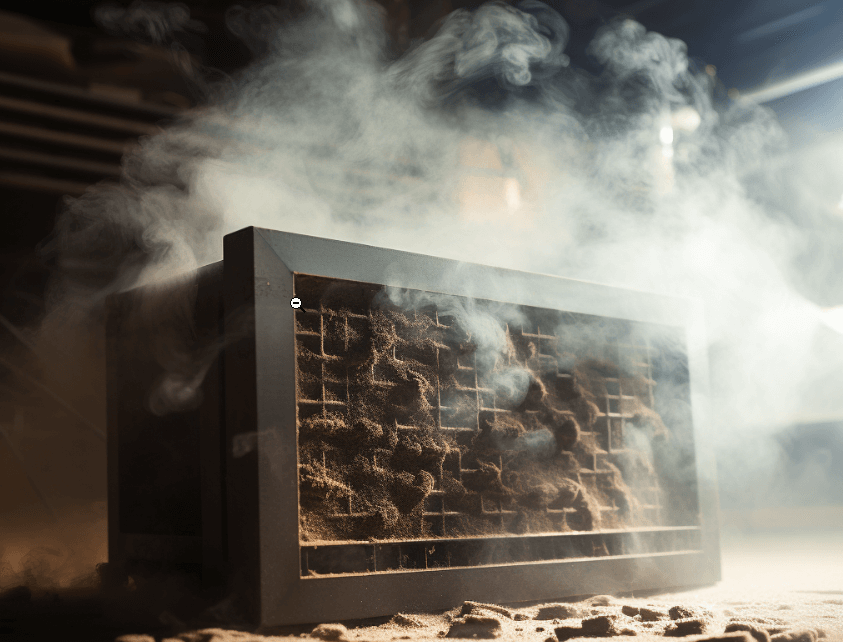
As wildfires continue to plague certain parts of the world, the impact on air quality can be profound. Smoke from these fires contains a mixture of gases and fine particles, which can be harmful to our health when inhaled. One of the most important steps in protecting indoor air quality during wildfire smoke is to properly manage your HVAC system.
While the instinct may be to turn off your HVAC system during a wildfire, this can actually lead to a buildup of smoke particles indoors. Instead, it is recommended to run your HVAC system on recirculation mode. This mode pulls air from inside your home and filters it before redistributing it. However, it’s important to ensure that your HVAC filters are clean and in good condition to effectively filter out smoke particles.
In addition to running your HVAC system on recirculation mode, it can also be beneficial to use standalone air purifiers throughout your home. These devices are specifically designed to trap and remove airborne particles, including smoke particles. Placing air purifiers in common areas and bedrooms can help ensure cleaner air throughout your home.
Furthermore, it’s important to limit outdoor air intake during wildfire smoke. This means keeping windows and doors closed as much as possible. Sealing any gaps or cracks in windows and doors can also help prevent smoke from entering your home. Additionally, using weatherstripping on doors and windows can further improve the seal and prevent outdoor air from leaking in.
Remember to regularly check air quality reports and follow any recommendations or warnings from local authorities. It’s also important to take steps to protect your health, such as wearing masks specifically designed for filtering out smoke particles.
By properly managing your HVAC system and taking additional steps to protect indoor air quality, you can help minimize the impact of wildfire smoke on your health and create a safer living environment for you and your family.
Why is it Important to Run Your HVAC System Safely During Wildfire Smoke?
When a wildfire occurs, the air can become filled with smoke and harmful particles. This poses a significant health risk, especially for individuals with respiratory conditions, the elderly, and young children. Running your HVAC system safely during wildfire smoke is crucial to maintain good indoor air quality and protect your health.
Here are some reasons why it is important to run your HVAC system safely during wildfire smoke:
- Filtering out harmful particles: HVAC systems have air filters that can help capture and remove smoke particles from the indoor air. It is essential to ensure that your HVAC system’s air filters are clean and in good condition to effectively filter out these harmful particles. Regularly changing or cleaning your filters during a wildfire event is recommended.
- Creating a clean indoor environment: By running your HVAC system safely, you can create a controlled indoor environment that is free from smoke and other external pollutants. This is particularly important for individuals with respiratory conditions, as exposure to smoke can aggravate their symptoms and lead to respiratory distress.
- Reducing the risk of respiratory issues: Wildfire smoke contains a mixture of harmful gases and microscopic particles, such as carbon monoxide and fine particulate matter. Breathing in these pollutants for an extended period can irritate the respiratory system and cause or exacerbate respiratory issues. Running your HVAC system safely can help lower the concentration of these pollutants indoors and reduce the risk of respiratory problems.
- Providing relief and comfort: HVAC systems not only filter the air but also help regulate indoor temperature and humidity levels. During a wildfire event, the air can become hot and dry, causing discomfort. By running your HVAC system, you can maintain a comfortable indoor environment, providing relief from the harsh outdoor conditions.
- Preventing smoke infiltration: Properly functioning HVAC systems can help create positive pressure indoors, preventing smoke from infiltrating your home. By keeping windows and doors closed and relying on your HVAC system for ventilation, you can minimize the entry of smoke and maintain cleaner indoor air quality.
In summary, running your HVAC system safely during wildfire smoke is essential for protecting your health, maintaining good indoor air quality, and creating a comfortable living environment. Regularly maintaining and servicing your HVAC system, particularly the air filters, is crucial during periods of increased air pollution caused by wildfires.
Protect Your Health
During times when wildfire smoke is present, it is important to take precautions to protect your health. Exposure to smoke can have harmful effects on your respiratory system and overall well-being. Here are some steps you can take to minimize your exposure:
- Stay indoors: If you can, stay inside with windows and doors closed to reduce the amount of smoke that enters your home. Use air purifiers with HEPA filters to improve indoor air quality.
- Avoid strenuous activities: Limit your outdoor activities, especially those that require physical exertion. This will help prevent you from inhaling large amounts of smoke.
- Monitor air quality: Stay informed about the air quality in your area. Check local air quality index (AQI) reports and follow any recommendations or advisories provided by local health agencies.
- Use masks when necessary: If you need to go outside, consider wearing a mask that can filter out fine particles in the air. Look for masks labeled N95 or N99, which provide better filtration.
- Stay hydrated: Drink plenty of water to help flush out any toxins that you may have inhaled from the smoke.
- Seek medical help if needed: If you experience symptoms such as difficulty breathing, chest pain, or severe coughing, seek medical attention immediately. These could be signs of a respiratory problem caused by the smoke.
- Follow evacuation orders: If local authorities issue evacuation orders due to a wildfire, it is crucial to follow them for your safety. Pay attention to emergency alerts and have an evacuation plan in place.
Remember, protecting your health should be your top priority during wildfire smoke events. By taking these precautions, you can minimize your exposure and reduce the risks associated with poor air quality.
Minimize Smoke Inhalation
To minimize smoke inhalation during a wildfire, it is important to take the following precautions:
- Stay indoors: Keep windows and doors closed to prevent smoke from entering your home or building. Use weather stripping and caulking to seal any gaps or cracks in doors and windows.
- Use air purifiers: Consider using high-efficiency particulate air (HEPA) filters or air purifiers to remove smoke particles from the air. Ensure that the filters are clean and in proper working condition.
- Avoid outdoor activities: Limit your time outdoors, especially during periods of high smoke concentration. If you must go outside, wear a mask that is certified to filter out fine particles (such as an N95 mask).
- Keep indoor air clean: Avoid activities that generate indoor air pollution, such as smoking, using candles or wood-burning stoves, or frying food. These activities can contribute to the overall air pollution in your home.
- Stay informed: Keep updated on local air quality reports and heed any warnings or recommendations provided by local authorities. If advised to evacuate, follow the instructions given.
It is important to prioritize your health and safety during wildfires, especially when it comes to minimizing smoke inhalation. Taking these precautions can help reduce your exposure to harmful smoke particles and maintain better indoor air quality.
Prevent Allergies and Asthma Attacks
During periods of wildfire smoke, individuals with allergies and asthma are at a higher risk of experiencing symptoms and exacerbations of their conditions. To minimize the impact of smoke on your respiratory health, follow these preventive measures:
- Stay Indoors: Try to spend as much time as possible indoors, where the air is usually cleaner. Keep windows and doors closed to prevent smoke from entering your home.
- Use Air Purifiers: Consider using an air purifier with a high-efficiency particulate air (HEPA) filter. These filters can remove fine particles and pollutants from indoor air.
- Maintain Good Indoor Air Quality: Avoid using products that can release pollutants into the air, such as tobacco smoke, candles, and certain cleaning products. Keep your home clean and well-ventilated.
- Monitor Air Quality Index (AQI): Stay updated on the AQI in your area by checking local air quality reports or using smartphone apps. Avoid outdoor activities when the AQI is high.
- Use Medications as Prescribed: If you have allergies or asthma, make sure to take your prescribed medications as directed by your healthcare provider. This can help control symptoms and prevent exacerbations.
- Stay Hydrated: Drinking plenty of water can help keep your airways moist and reduce the irritation caused by smoke.
Following these preventive measures can help reduce the risk of allergies and asthma attacks during periods of wildfire smoke. However, if you experience severe symptoms or have difficulty breathing, seek medical attention immediately.
How to Prepare Your HVAC System for Wildfire Smoke
When faced with wildfire smoke, it’s essential to take measures to protect your home and your health. One aspect that often gets overlooked is preparing your HVAC system to handle the smoke. Follow these steps to ensure your HVAC system is ready:
- Inspect and clean your HVAC system. Before wildfire season, schedule a professional inspection and cleaning of your HVAC system. This will ensure that it is in good working condition and free from any potential debris or dust that could be brought in by the smoke.
- Replace air filters regularly. Air filters are a crucial component of your HVAC system, especially during wildfire smoke events. Check your air filters regularly and replace them as needed. This will help trap and remove the fine particles present in the smoke before they reach your home’s interior.
- Seal air leaks. During wildfires, it’s essential to minimize the amount of outdoor air entering your home. Seal any gaps or cracks in doors, windows, and vents to prevent smoke from seeping in. Consider installing weatherstripping or using silicone caulk for this purpose.
- Close windows and doors. To keep smoke from entering your home, ensure that all windows, doors, and vents are closed tightly. This will create a barrier between your indoor environment and the outdoor smoke.
- Consider using an air purifier. In addition to your HVAC system, using an air purifier can be an extra line of defense against wildfire smoke. Look for a purifier with a High-Efficiency Particulate Air (HEPA) filter, as it can effectively remove smoke particles from the indoor air.
- Stay informed and adjust your system. Keep an eye on local air quality reports and follow any advisories or recommendations given by authorities. If the air quality deteriorates due to wildfire smoke, consider adjusting your HVAC system to limit the amount of outdoor air intake.
By following these steps, you can better prepare your HVAC system for wildfire smoke and minimize its impact on your home and health.
Check and Replace Air Filters
One of the most important steps in ensuring the safety and efficiency of your HVAC system during wildfire smoke is to regularly check and replace the air filters. The air filters play a crucial role in keeping the indoor air clean and free from pollutants, including smoke particles.
Why is it important?
During a wildfire, the air can become filled with particles such as ash, soot, and debris. These particles can easily enter your home and clog up the air filters in your HVAC system. Clogged air filters not only reduce the system’s efficiency but can also lead to poor indoor air quality.
How often should you check and replace the air filters?
It is recommended to check your air filters at least once a month, especially during periods of heavy smoke. If you notice that the filters are covered in a thick layer of dirt or debris, it is time to replace them. However, if you live in an area prone to frequent wildfires, it may be necessary to check and replace the filters more frequently.
How to check and replace the air filters?
Here is a step-by-step guide:
- Locate the air filters in your HVAC system. They are usually found near the air handler unit or the return air ducts.
- Turn off the power to the HVAC system to prevent any accidents.
- Carefully remove the air filters from their housing. Take note of how they are positioned, as you will need to install the new filters in the same way.
- Inspect the filters for any signs of damage or excessive dirt accumulation. If they appear dirty or damaged, it is time to replace them.
- When installing new filters, make sure they are the correct size and type for your HVAC system. Follow the instructions provided by the manufacturer.
- Slide the new filters into their housing, making sure they are properly positioned and securely in place.
- Turn the power back on and run your HVAC system to test its operation.
Additional tips:
- Consider using high-efficiency particulate air (HEPA) filters, which are designed to capture smaller particles and provide better air filtration.
- If you have a whole-house air purifier, make sure to check and replace its filters as well.
- Keep spare air filters on hand so you can easily replace them when needed.
Remember, checking and replacing the air filters is a simple yet effective way to ensure that your HVAC system operates safely and efficiently during wildfire smoke. It helps to protect your health and maintain good indoor air quality.
Seal Leaks and Cracks
One of the most effective ways to reduce the amount of smoke entering your home is to seal any leaks or cracks in your HVAC system. These openings can allow smoke particles to infiltrate your living space and decrease the air quality inside.
Here are some steps you can take to seal leaks and cracks:
- Inspect your HVAC system: Start by examining your HVAC system for any obvious leaks or cracks. Look for gaps around windows, doors, vents, and ducts. These areas are common entry points for smoke particles.
- Fill gaps with weatherstripping: Use weatherstripping materials, such as adhesive foam strips or rubber gaskets, to seal any gaps around windows and doors. This will prevent smoke from seeping in through these openings.
- Seal ductwork: Inspect your HVAC ductwork for any signs of damage or loose connections. Use foil tape or mastic sealant to seal any leaks or cracks you find. This will ensure that smoke cannot enter your home through the ducts.
- Check ventilation openings: Examine the ventilation openings in your home, such as exhaust fans and dryer vents. Make sure these openings are properly sealed and have appropriate covers to prevent smoke from entering.
- Consider professional help: If you are unsure about how to seal leaks and cracks in your HVAC system, it may be wise to seek assistance from a professional HVAC technician. They have the expertise and tools to thoroughly inspect and seal your system.
By sealing leaks and cracks in your HVAC system, you can significantly reduce the amount of smoke that enters your home during wildfire events. This will help maintain a healthier indoor environment for you and your family.
Clean the HVAC Ducts
During wildfire seasons, it is essential to clean the HVAC ducts to ensure the air quality inside your home remains safe and healthy. Smoke from wildfires can contain harmful particles and pollutants that can accumulate within the ducts and circulate through your HVAC system, compromising the quality of the air you breathe. By regularly cleaning the ducts, you can remove these contaminants and maintain a clean and healthy indoor environment.
Here are some steps to effectively clean your HVAC ducts:
- Turn off the HVAC system: Before starting the cleaning process, turn off your HVAC system to prevent any air movement that could disturb the dust and particles within the ducts.
- Access the ducts: Locate the access points for your HVAC ducts. Common access points include vents, registers, and return air grilles. Remove the covers or grilles to gain access to the ducts.
- Inspect the ducts: Take a flashlight and inspect the condition of the ducts. Look for any signs of debris, dust, or mold growth. Pay close attention to areas near the vents and registers.
- Clean the ducts: Use a vacuum cleaner with a long hose attachment to remove the accumulated debris and dust from the ducts. You may also consider using a brush attachment to loosen any stubborn particles.
- Sanitize the ducts: After cleaning, it is recommended to sanitize the ducts to kill any remaining bacteria or mold spores. Use a disinfectant spray or wipe specifically designed for HVAC systems.
- Replace filters: Don’t forget to replace the filters in your HVAC system. Clean filters can help trap additional airborne particles and maintain better air quality.
It is advisable to hire a professional duct cleaning service if you are unsure about performing the task yourself. Professionals have the necessary equipment and expertise to thoroughly clean and sanitize your HVAC ducts, ensuring optimal air quality for your home.
Regular cleaning of your HVAC ducts not only helps in protecting your health but also improves the efficiency of your HVAC system. With clean ducts, your system can operate more effectively, providing better air circulation and reducing energy consumption.
Install an Air Purifier
Installing an air purifier is an effective way to improve indoor air quality and keep your HVAC system running safely during wildfire smoke. Air purifiers are designed to capture and remove fine particles and harmful pollutants from the air, including smoke particles and volatile organic compounds (VOCs).
When choosing an air purifier, look for one that has a high-efficiency particulate air (HEPA) filter. HEPA filters are capable of capturing particles as small as 0.3 microns, which includes most smoke particles. Make sure the air purifier has the appropriate coverage area for the room or area where it will be placed.
It is important to properly maintain your air purifier to ensure its effectiveness. This includes regularly changing the filters according to the manufacturer’s instructions. Some air purifiers have indicator lights that remind you when it’s time to change the filters.
In addition to using an air purifier, consider keeping the windows and doors of your home closed when there is wildfire smoke in the air. This can help prevent outdoor air from entering your home and further polluting the indoor air.
Benefits of Installing an Air Purifier
- Removes Smoke Particles: An air purifier with a HEPA filter can effectively capture and remove smoke particles, improving indoor air quality.
- Reduces VOCs: Air purifiers can also help remove harmful volatile organic compounds (VOCs) that may be present in wildfire smoke.
- Relieves Respiratory Symptoms: Clean indoor air can help reduce respiratory symptoms such as coughing, sneezing, and wheezing, which can be exacerbated by wildfire smoke.
- Improves Sleep: Breathing clean air can improve sleep quality, allowing you to get a good night’s rest even during smoky conditions.
- Protects HVAC System: Installing an air purifier can help prevent smoke particles from clogging up your HVAC system and causing damage or inefficiency.
Overall, installing an air purifier is a proactive step you can take to safeguard your health and ensure the safe operation of your HVAC system during periods of wildfire smoke. Consider consulting with an HVAC professional to determine the best air purifier options for your specific needs.
Operate Your HVAC System during Wildfire Smoke
During wildfire smoke, it is important to ensure the proper operation of your HVAC system to maintain clean indoor air and protect your health. Here are some guidelines to follow:
- Keep windows and doors closed: Close all windows and doors to prevent outdoor smoke from entering your home or building.
- Check air filters regularly: Check and replace air filters regularly to ensure proper filtration of smoke particles. Use high-efficiency filters with a MERV rating of 7 or higher for better filtration.
- Seal any air leaks: Inspect your home or building for any air leaks and seal them with weatherstripping or caulk to prevent smoke from entering.
- Set your HVAC system to recirculate: If your HVAC system has a recirculation mode, set it to recirculate indoor air instead of drawing in outdoor air.
- Avoid using exhaust fans: Avoid using bathroom or kitchen exhaust fans that vent to the outside, as they can bring in smoke from outdoors.
- Avoid activities that generate indoor air pollutants: During wildfire smoke, avoid activities that can produce indoor air pollutants such as smoking, burning candles, or using gas stoves.
- Consider using portable air purifiers: Portable air purifiers with high-efficiency particulate air (HEPA) filters can help further clean the air indoors.
Following these guidelines will help you maintain a safe and healthy indoor environment during wildfire smoke. If you have any concerns about your HVAC system or indoor air quality, it is recommended to consult a professional HVAC technician.
Set Your HVAC to Recirculation Mode
During periods of intense wildfire smoke, it is important to adjust your HVAC system to recirculation mode. This helps to prevent outdoor air, which may be polluted with smoke particles, from entering your home. Instead, the system will recirculate the air already inside your home, improving indoor air quality and reducing your exposure to harmful pollutants.
To set your HVAC system to recirculation mode, follow these steps:
- Locate your thermostat control panel.
- Select the “fan” or “fan control” button.
- Switch the setting to “on” or “auto”.
- Choose the “recirculation” or “recirc” option.
Once the recirculation mode is activated, your HVAC system will start recirculating the air inside your home, filtering out any smoke particles that may have entered. This can provide temporary relief from the effects of wildfire smoke and help maintain indoor air quality.
It’s important to note that while recirculation mode can help filter out smoke particles, it is not a foolproof solution. Some smaller particles may still enter your home, and a higher level of filtration may be required for complete smoke removal. Consider using air purifiers with HEPA filters and sealing any gaps or cracks in windows and doors to further reduce smoke infiltration.
If you are uncertain about how to adjust your HVAC system or if it is not functioning properly, it is recommended to consult with a professional HVAC technician. They can provide guidance on the best settings for your specific system and help ensure that it is running safely and efficiently.
Remember, setting your HVAC system to recirculation mode is just one step in protecting yourself and your loved ones during periods of wildfire smoke. It is also important to stay informed about air quality advisories, limit your outdoor activities, and follow any evacuation or emergency instructions from local authorities.
Limit Outdoor Air Intake
During wildfires, it is important to reduce the intake of outdoor air into your HVAC system. This can help to minimize the amount of smoke and pollutants that enter your indoor space and ensure a safer environment for you and your family. Here are some steps to limit the outdoor air intake:
- Close windows and doors: Keep all windows and exterior doors securely closed to prevent smoke from entering your home or building. Use weather-stripping or caulking to seal any gaps or cracks that could allow outdoor air to seep in.
- Seal air vents and ducts: Use temporary filters or tape to seal off air vents and ducts that are located on the outside of your building. This can help to prevent smoke from being drawn into your HVAC system.
- Switch to recirculation mode: Set your HVAC system to recirculate mode or close the fresh air intake damper. This will prevent the system from pulling in outdoor air and instead recirculate the air already inside your home.
- Use portable air purifiers: Consider using portable air purifiers with HEPA filters in rooms where you spend most of your time. This can help to further filter and improve the indoor air quality.
It is important to note that limiting outdoor air intake may affect the ventilation and air quality in your home or building. To ensure proper ventilation during wildfire events, consider consulting with HVAC professionals who can assess your system and recommend appropriate measures.
By taking these steps to limit the outdoor air intake, you can help to protect yourself and your loved ones from the harmful effects of wildfire smoke. Keep in mind that these measures are temporary and it is crucial to follow local health and safety guidelines to stay safe during wildfire events.
Keep Windows and Doors Closed
When wildfires are blazing nearby, it is crucial to keep your windows and doors closed to prevent smoke from entering your home. The smoke from wildfires contains harmful pollutants that can be hazardous to your health, especially for those with respiratory conditions. Keeping your windows and doors closed will help create a barrier that will minimize the entry of smoke particles into your living space.
Here are some tips to ensure that your windows and doors remain tightly closed:
- Inspect your windows and doors for any gaps or cracks that may allow smoke to enter. Seal any openings with weatherstripping or caulk to create a tight seal.
- Use a draft stopper or door sweep to prevent smoke from seeping in under the doors.
- Consider installing window filters or air purifiers with HEPA filters to further improve indoor air quality.
Keep in mind that proper ventilation is still important for maintaining good indoor air quality. So, when the air quality improves, make sure to open your windows and doors to let in fresh air.
It is also important to note that HVAC systems equipped with air filters can help filter out some of the smoke particles. However, it is recommended to use filters with a minimum efficiency reporting value (MERV) rating of 13 or higher, as lower-rated filters may not effectively capture smaller smoke particles.
In summary, keeping your windows and doors closed during wildfire smoke events is essential for protecting your health and maintaining good indoor air quality. By sealing any gaps or cracks and using air purifiers or window filters, you can create a safer living environment for you and your family.
Additional Tips for Running Your HVAC System during Wildfire Smoke
1. Keep your windows and doors closed: To prevent smoke from entering your home, make sure all windows and doors are tightly closed. This will help maintain a cleaner and safer indoor environment.
2. Use high-efficiency air filters: Consider upgrading your HVAC system’s air filters to high-efficiency filters that are capable of capturing smaller particles. This can help reduce the amount of smoke and other pollutants that enter your home.
3. Avoid using your HVAC system’s recirculation mode: During wildfire smoke events, it’s recommended to turn off your HVAC system’s recirculation mode. This mode recirculates indoor air, which can trap pollutants and increase their concentration inside your home.
4. Regularly clean and maintain your HVAC system: Make sure you clean and maintain your HVAC system regularly to ensure it operates efficiently. This includes cleaning or replacing filters, checking air vents for blockages, and scheduling regular professional maintenance.
5. Consider using portable air purifiers: If the air quality inside your home is severely affected by wildfire smoke, consider using portable air purifiers in addition to running your HVAC system. These devices can help remove smoke particles and improve indoor air quality in specific rooms.
6. Stay informed about wildfire conditions: Stay updated on the current wildfire situation in your area and follow any guidelines or recommendations from local authorities. This can help you make informed decisions about running your HVAC system and taking additional precautions, if necessary.
7. Create a clean air space: Designate one or more rooms in your home as a clean air space where you can retreat during periods of high smoke. This room should have a good seal to prevent smoke infiltration and may be equipped with an air purifier or a portable HEPA filter.
8. Monitor indoor air quality: Consider using an indoor air quality monitor to regularly check the air quality inside your home. This can help you determine if running your HVAC system and taking other measures are effectively reducing the smoke particles in your indoor environment.
9. Follow local air quality guidelines: Keep track of local air quality guidelines and recommendations. If the air quality index (AQI) reaches hazardous levels, it may be best to avoid running your HVAC system altogether and seek alternative solutions to keep your indoor air clean.
10. Prioritize your health and safety: If you or your family members have pre-existing respiratory conditions or are particularly sensitive to smoke, it’s important to prioritize your health and safety. Consider evacuating the area if necessary and consult with healthcare professionals for personalized advice.
Remember, these tips are general guidelines and might not apply to all situations. It’s important to assess the severity of the wildfire smoke and consult with local authorities or HVAC professionals for specific recommendations tailored to your circumstances.
Use Portable Air Cleaners
During periods of wildfire smoke, using portable air cleaners can greatly improve the air quality inside your home. These devices are designed to filter out particles and pollutants, helping to keep the air clean and safe to breathe.
When selecting a portable air cleaner, look for one that has a high-efficiency particulate air (HEPA) filter. HEPA filters are capable of capturing tiny particles, including smoke particles, and can help to reduce their concentration indoors.
It’s important to properly size your portable air cleaners based on the square footage of the room or area you want to clean. Check the manufacturer’s recommendations to determine the appropriate size for your space.
When using portable air cleaners, keep the following tips in mind:
- Place the air cleaner in the room where you spend the most time, such as the living room or bedroom.
- If possible, close windows and doors to prevent smoke from entering the room.
- Keep windows and doors closed while running the air cleaner to maximize its effectiveness.
- Run the air cleaner continuously, or as long as the smoke persists, for best results.
- Regularly clean and maintain the filters according to the manufacturer’s instructions to ensure optimal performance.
Using portable air cleaners can provide an additional layer of protection against wildfire smoke, helping to create a safer and healthier indoor environment for you and your family.
Keep Indoor Air Moist
During a wildfire, the air quality can deteriorate significantly, leading to dry and irritated air in your home. It is important to keep the indoor air moist to add much-needed relief and comfort.
To keep the air moist, you can follow the following tips:
- Use a humidifier: Investing in a humidifier can help add moisture to the air in your home. Set it up in the rooms where you spend the most time to maximize its effects. Make sure to clean and maintain the humidifier regularly to prevent the growth of mold and bacteria.
- Place bowls of water: Another way to add moisture to the air is by placing bowls of water around your home. Evaporating water from the bowls will increase humidity levels. You can also add a few drops of essential oils to the water to create a pleasant aroma in your space.
- Take showers with the bathroom door open: Steam from the shower can help increase humidity levels in your home. Leave the bathroom door open after taking a hot shower to allow the steam to spread throughout your space.
- Hang wet laundry: If you have the space, hang wet laundry indoors. As the clothes dry, the moisture will evaporate into the air, increasing the humidity levels. This method is not only practical but also helps save energy by avoiding the use of a dryer.
- Stay hydrated: Drinking plenty of water can help keep your body hydrated and minimize the effects of dry air on your respiratory system. Make sure to drink water regularly, especially during periods of poor air quality.
By keeping the indoor air moist, you can create a more comfortable and healthier living environment for you and your family during wildfire smoke events.
Monitor Air Quality Index (AQI)
During wildfire smoke events, it is essential to monitor the Air Quality Index (AQI) regularly to ensure the safety of your indoor environment. The AQI is a measurement that provides information about the current air quality and the potential health risks associated with it. There are several ways to access AQI information:
- Government Websites: Local and national government agencies often provide up-to-date information on the AQI in your area. Visit their websites or relevant departments to find the latest data.
- Weather Apps and Websites: Many weather apps and websites include an AQI forecast as part of their services. Check your preferred weather source for this information.
- Air Quality Monitoring Apps: There are specific apps available that focus on monitoring air quality. These apps provide real-time updates and may include additional features such as notifications and personalized recommendations.
Once you have access to the AQI data, pay attention to the following:
- AQI Levels: The AQI is typically divided into six levels, ranging from “Good” to “Hazardous.” Each level corresponds to a specific color code to easily understand the current air quality.
- Health Recommendations: The AQI provides health recommendations based on the current conditions. These recommendations indicate the appropriate actions individuals should take to protect themselves.
- High-Risk Groups: Certain groups, such as individuals with respiratory conditions, the elderly, and young children, are more susceptible to the adverse effects of poor air quality. Pay extra attention to the AQI if you or someone in your household falls into these high-risk categories.
Regularly monitoring the AQI will help you make informed decisions about the operation of your HVAC system during wildfire smoke events. It will also help you take necessary precautions to safeguard your health and the well-being of your household.
Schedule Regular HVAC Maintenance
Regular HVAC maintenance is important for ensuring the safe and efficient operation of your system, especially during periods of wildfire smoke. By scheduling routine maintenance, you can help prevent potential issues that may arise from prolonged exposure to smoke.
Here are some key steps to include in your HVAC maintenance schedule:
- Clean or replace air filters: Smoke particles can quickly accumulate in your air filters, reducing their effectiveness and potentially causing damage to your HVAC system. Clean or replace the filters regularly to ensure proper airflow and minimize the amount of smoke entering your home.
- Inspect air ducts: Check your air ducts for any signs of smoke residue or damage. If you notice any issues, such as leaks or blockages, contact a professional HVAC technician for assistance. They can clean and repair the ducts if necessary.
- Test carbon monoxide detectors: Smoke from wildfires can increase the levels of carbon monoxide inside your home. Make sure your carbon monoxide detectors are functioning properly by testing them regularly. Replace the batteries as needed.
- Check the outdoor unit: Inspect the outdoor unit of your HVAC system for any signs of smoke damage, such as ash buildup or debris. Clean the unit if necessary to ensure proper airflow and prevent potential malfunctions.
- Monitor system performance: Pay attention to any changes in your HVAC system’s performance, such as reduced cooling or heating efficiency. If you notice any issues, contact a professional technician to assess and address the problem promptly.
By scheduling regular HVAC maintenance and addressing any potential problems promptly, you can keep your system running safely and efficiently, even during periods of wildfire smoke.
Q&A:
Should I turn off my HVAC system during wildfire smoke?
It is generally recommended to turn off your HVAC system during wildfire smoke to prevent the smoke particles from entering your home. However, if you have a high-quality air filter and your system is properly sealed, you can keep it running but make sure to change the filters more frequently.
How often should I change the air filters in my HVAC system during wildfire smoke?
During wildfire smoke, it is recommended to change the air filters in your HVAC system every 2-3 weeks to ensure they are not clogged with smoke particles. This will help maintain good air quality in your home.
Can I use a portable air purifier instead of turning off my HVAC system?
Using a portable air purifier can be a good option during wildfire smoke if you want to keep your HVAC system running. It will help remove smoke particles from the air in specific rooms, but it may not be as effective in purifying the air throughout your entire home.
Is it necessary to keep my windows closed during wildfire smoke?
During wildfire smoke, it is highly recommended to keep your windows closed to prevent the smoke from entering your home. Make sure your windows are properly sealed to minimize the infiltration of smoke particles.
How can I improve air quality in my home during wildfire smoke?
To improve air quality in your home during wildfire smoke, you can turn off your HVAC system, keep your windows closed, use a portable air purifier, and avoid activities that can introduce smoke or other pollutants indoors. It is also important to regularly clean your living space and surfaces to remove any settled smoke particles.

